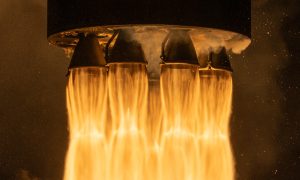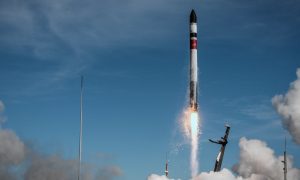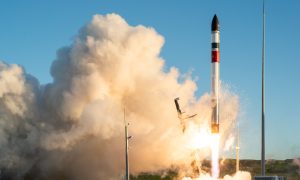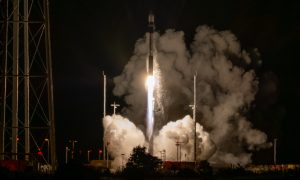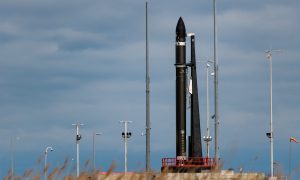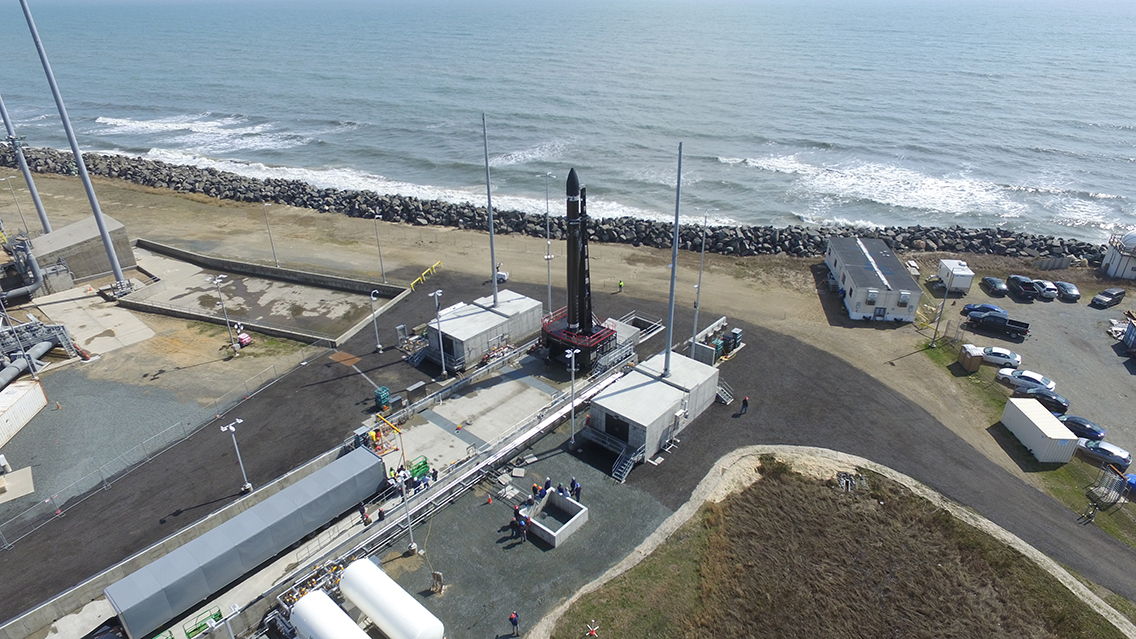

News
Rocket Lab Electron returns to flight as FAA approves launches from the US
Rocket Lab, the space systems company and small satellite launcher, returned to active launch status recently with the successful fourteenth launch of its Electron rocket. The “I Can’t Believe It’s Not Optical” mission marked Rocket Lab’s comeback after suffering an in-flight anomaly during Electron’s thirteenth flight on July 4, 2020.
Just nine weeks after the conclusion of the incident investigation, following its successful return to flight, Rocket Lab has announced that it has been granted a five-year Launch Operator License – permission to launch multiple missions a year – by the Federal Aviation Administration (FAA) for its new Launch Complex 2 in Virginia.
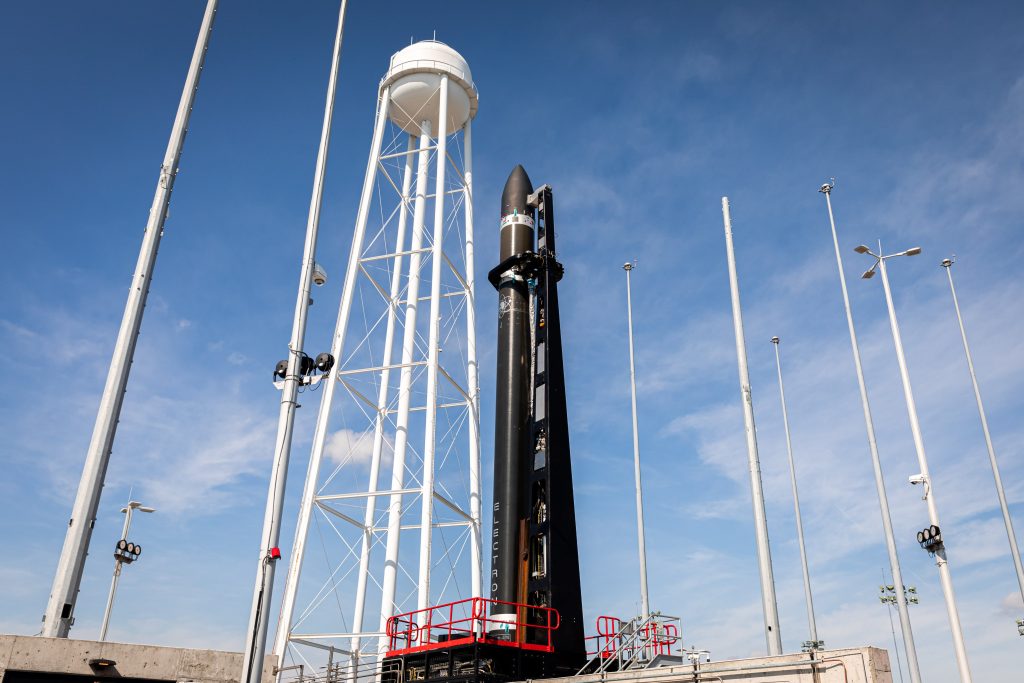
“I Can’t Believe It’s Not Optical,” Electron’s Return to Flight
The thirteenth flight of Electron “Pics or It Didn’t Happen” on July 4 began with a flawless launch from Launch Complex – 1A (LC-1A) in Mahia, New Zealand. During the flight of the second stage, there were indications that Electron had experienced a critical malfunction. Telemetry data confirmed that Electron had encountered an in-flight anomaly that ultimately resulted in the company’s first mission failure and loss of seven customer payloads.
The root cause of the anomaly was quickly tracked down to a single bad electrical connection on the second stage. Less than a month after the incident, Rocket Lab announced that it was able to reconstruct what occurred, make the necessary corrective measures, and ready to return Electron to flight.
Just a few short weeks later on August 24, Electron was on pad LC-1A in New Zealand for pre-flight testing ahead of its fourteenth – and return to flight – mission “I Can’t Believe It’s Not Optical.” The dedicated mission for San Francisco-based information services company, Capella Space, carried a single microsatellite called “Sequoia” to a circular orbit at approximately 500km.
According to a statement provided by Rocket Lab, Sequoia is the “first synthetic aperture radar (SAR) satellite to deliver publicly available data from a mid-inclination orbit over the U.S., Middle East, Korea, Japan, Europe, South East Asia, and Africa.” Sequoia is the first microsatellite in a constellation series that Capella Space says will “provide insights and data that can be used for security, agricultural and infrastructure monitoring, as well as disaster response and recovery.”
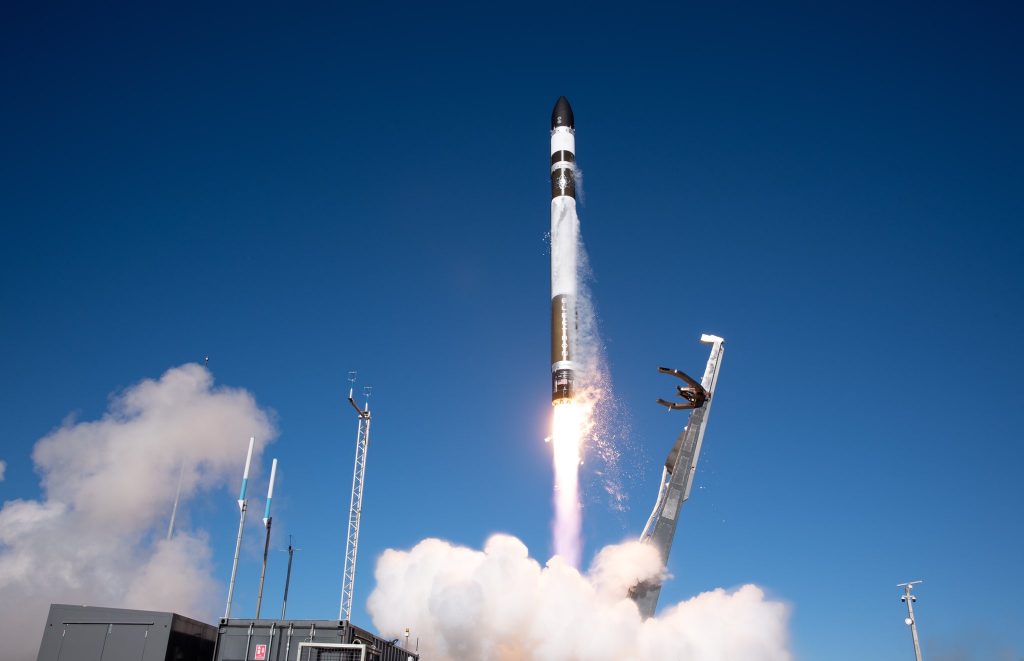
The success of “I Can’t Believe It’s Not Optical” marks the thirteenth successful mission and the deployment of Sequoia makes a total of 54 satellites delivered to orbit since Rocket Lab began operation in 2017. Rocket Lab founder and chief executive officer, Peter Beck, congratulated Capella Space on the successful deployment of its first microsatellite and celebrated the entire Rocket Lab team stating that “I’m also immensely proud of the team, their hard work, and dedication in returning Electron to the pad safely and quickly as we get back to frequent launches with an even more reliable launch vehicle for our small satellite customers.”
FAA certifies Electron launches from the US
In addition to LC-1A in New Zealand, Rocket Lab broke ground on a second launchpad located in the United States in late 2018. The launchpad was declared complete in December 2019.
Although operational, Launch Complex 2 located at the Mid-Atlantic Regional Spaceport within NASA’s Wallops Flight Facility on Wallops Island in Virginia still had a few milestones to achieve ahead of the first scheduled launch. In April 2020 an Electron rocket arrived at the pad for integrated systems tests. Two major hurdles left to clear ahead of launching an Electron from LC-2 was receiving a launch operator license from the Federal Aviation Administration (FAA) and receiving NASA certification of the Electron’s Autonomous Flight Termination System (AFTS).
On Tuesday, September 1, Rocket Lab announced that it had received a new 5-year Launch Operator License from the FAA. The license permits California-based launcher and space systems company to launch the Electron rocket from LC-2 multiple times a year without applying for a new license with every launch. This in addition to the Launch Complex 1 license means that Rocket Lab is now licensed to support up to 130 flights of Electron per year.
In addition, LC-1 is expected to expand and bring a second launchpad online, launch complex – 1B, sometime before the end of the year. Beck said, “Having FAA Launch Operator Licenses for missions from both Rocket Lab launch complexes enables us to provide rapid, responsive launch capability for small satellite operators. With 14 missions already launched from LC-1, Electron is well established as the reliable, flight-proven vehicle of choice for small sat missions spanning national security, science and exploration.”
Launch Complex 2 was specifically designed to support responsive missions for NASA and the United States government. The first mission from LC-2 is slated to lift the microsatellite STP-27RM for the United States Air Force as part of the Space Test Program. In 2021 Electron will send NASA’s CAPSTONE mission to a “Near Rectilinear Halo Orbit” (NRHO) around the Moon in support of NASA’s Artemis program.
Even more news…
On Thursday, September 3, Rocket Lab founder Peter Beck will host a webcast to provide an “exciting update” and discuss “the next chapter” of Rocket Lab. The webcast will go live at 2:00 pm ET (18:00UTC).
Elon Musk
Why Tesla’s Q3 could be one of its biggest quarters in history
Tesla could stand to benefit from the removal of the $7,500 EV tax credit at the end of Q3.

Tesla has gotten off to a slow start in 2025, as the first half of the year has not been one to remember from a delivery perspective.
However, Q3 could end up being one of the best the company has had in history, with the United States potentially being a major contributor to what might reverse a slow start to the year.
Earlier today, the United States’ House of Representatives officially passed President Trump’s “Big Beautiful Bill,” after it made its way through the Senate earlier this week. The bill will head to President Trump, as he looks to sign it before his July 4 deadline.
The Bill will effectively bring closure to the $7,500 EV tax credit, which will end on September 30, 2025. This means, over the next three months in the United States, those who are looking to buy an EV will have their last chance to take advantage of the credit. EVs will then be, for most people, $7,500 more expensive, in essence.
The tax credit is available to any single filer who makes under $150,000 per year, $225,000 a year to a head of household, and $300,000 to couples filing jointly.
Ending the tax credit was expected with the Trump administration, as his policies have leaned significantly toward reliance on fossil fuels, ending what he calls an “EV mandate.” He has used this phrase several times in disagreements with Tesla CEO Elon Musk.
Nevertheless, those who have been on the fence about buying a Tesla, or any EV, for that matter, will have some decisions to make in the next three months. While all companies will stand to benefit from this time crunch, Tesla could be the true winner because of its sheer volume.
If things are done correctly, meaning if Tesla can also offer incentives like 0% APR, special pricing on leasing or financing, or other advantages (like free Red, White, and Blue for a short period of time in celebration of Independence Day), it could see some real volume in sales this quarter.
You can now buy a Tesla in Red, White, and Blue for free until July 14 https://t.co/iAwhaRFOH0
— TESLARATI (@Teslarati) July 3, 2025
Tesla is just a shade under 721,000 deliveries for the year, so it’s on pace for roughly 1.4 million for 2025. This would be a decrease from the 1.8 million cars it delivered in each of the last two years. Traditionally, the second half of the year has produced Tesla’s strongest quarters. Its top three quarters in terms of deliveries are Q4 2024 with 495,570 vehicles, Q4 2023 with 484,507 vehicles, and Q3 2024 with 462,890 vehicles.
Elon Musk
Tesla Full Self-Driving testing continues European expansion: here’s where
Tesla has launched Full Self-Driving testing in a fifth European country ahead of its launch.

Tesla Full Self-Driving is being tested in several countries across Europe as the company prepares to launch its driver assistance suite on the continent.
The company is still working through the regulatory hurdles with the European Union. They are plentiful and difficult to navigate, but Tesla is still making progress as its testing of FSD continues to expand.
Today, it officially began testing in a new country, as more regions open their doors to Tesla. Many owners and potential customers in Europe are awaiting its launch.
On Thursday, Tesla officially confirmed that Full Self-Driving testing is underway in Spain, as the company shared an extensive video of a trip through the streets of Madrid:
Como pez en el agua …
FSD Supervised testing in Madrid, Spain
Pending regulatory approval pic.twitter.com/txTgoWseuA
— Tesla Europe & Middle East (@teslaeurope) July 3, 2025
The launch of Full Self-Driving testing in Spain marks the fifth country in which Tesla has started assessing the suite’s performance in the European market.
Across the past several months, Tesla has been expanding the scope of countries where Full Self-Driving is being tested. It has already made it to Italy, France, the Netherlands, and Germany previously.
Tesla has already filed applications to have Full Self-Driving (Supervised) launched across the European Union, but CEO Elon Musk has indicated that this particular step has been the delay in the official launch of the suite thus far.
In mid-June, Musk revealed the frustrations Tesla has felt during its efforts to launch its Full Self-Driving (Supervised) suite in Europe, stating that the holdup can be attributed to authorities in various countries, as well as the EU as a whole:
Tesla Full Self-Driving’s European launch frustrations revealed by Elon Musk
“Waiting for Dutch authorities and then the EU to approve. Very frustrating and hurts the safety of people in Europe, as driving with advanced Autopilot on results in four times fewer injuries! Please ask your governing authorities to accelerate making Tesla safer in Europe.”
Waiting for Dutch authorities and then the EU to approve.
Very frustrating and hurts the safety of people in Europe, as driving with advanced Autopilot on results in four times fewer injuries!
Please ask your governing authorities to accelerate making Tesla safer in Europe. https://t.co/QIYCXhhaQp
— Elon Musk (@elonmusk) June 11, 2025
Tesla said last year that it planned to launch Full Self-Driving in Europe in 2025.
Elon Musk
xAI’s Memphis data center receives air permit despite community criticism
xAI welcomed the development in a post on its official xAI Memphis account on X.

Elon Musk’s artificial intelligence startup xAI has secured an air permit from Memphis health officials for its data center project, despite critics’ opposition and pending legal action. The Shelby County Health Department approved the permit this week, allowing xAI to operate 15 mobile gas turbines at its facility.
Air permit granted
The air permit comes after months of protests from Memphis residents and environmental justice advocates, who alleged that xAI violated the Clean Air Act by operating gas turbines without prior approval, as per a report from WIRED.
The Southern Environmental Law Center (SELC) and the NAACP has claimed that xAI installed dozens of gas turbines at its new data campus without acquiring the mandatory Prevention of Significant Deterioration (PSD) permit required for large-scale emission sources.
Local officials previously stated the turbines were considered “temporary” and thus not subject to stricter permitting. xAI applied for an air permit in January 2025, and in June, Memphis Mayor Paul Young acknowledged that the company was operating 21 turbines. SELC, however, has claimed that aerial footage shows the number may be as high as 35.
Critics are not giving up
Civil rights groups have stated that they intend to move forward with legal action. “xAI’s decision to install and operate dozens of polluting gas turbines without any permits or public oversight is a clear violation of the Clean Air Act,” said Patrick Anderson, senior attorney at SELC.
“Over the last year, these turbines have pumped out pollution that threatens the health of Memphis families. This notice paves the way for a lawsuit that can hold xAI accountable for its unlawful refusal to get permits for its gas turbines,” he added.
Sharon Wilson, a certified optical gas imaging thermographer, also described the emissions cloud in Memphis as notable. “I expected to see the typical power plant type of pollution that I see. What I saw was way worse than what I expected,” she said.
-

 Elon Musk3 days ago
Elon Musk3 days agoTesla investors will be shocked by Jim Cramer’s latest assessment
-

 News1 week ago
News1 week agoTesla Robotaxi’s biggest challenge seems to be this one thing
-

 News2 weeks ago
News2 weeks agoTexas lawmakers urge Tesla to delay Austin robotaxi launch to September
-

 Elon Musk2 weeks ago
Elon Musk2 weeks agoFirst Look at Tesla’s Robotaxi App: features, design, and more
-

 Elon Musk2 weeks ago
Elon Musk2 weeks agoxAI’s Grok 3 partners with Oracle Cloud for corporate AI innovation
-

 News2 weeks ago
News2 weeks agoSpaceX and Elon Musk share insights on Starship Ship 36’s RUD
-

 News2 weeks ago
News2 weeks agoWatch Tesla’s first driverless public Robotaxi rides in Texas
-

 News2 weeks ago
News2 weeks agoTesla has started rolling out initial round of Robotaxi invites


